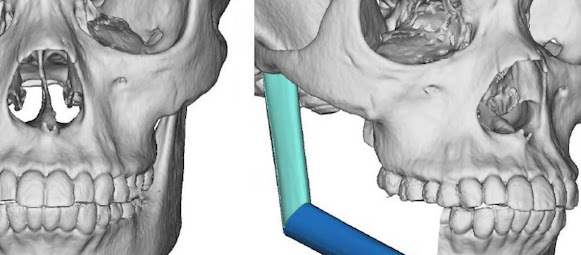Preventing Cleft Lip and Palate: The Role of Cleft Lip and Palate Organizations
Cleft lip and palate are among the most common congenital conditions worldwide, affecting thousands of infants each year. While these conditions can be treated with surgeries and therapies, prevention remains a critical aspect of addressing this issue. In this blog, we'll explore the importance of cleft lip and palate prevention and the significant role played by cleft lip and palate organizations like Inga Health.
Understanding Cleft
Lip and Palate
Cleft lip and palate are birth
defects that occur when a baby's lip or mouth do not form properly during
pregnancy. A cleft lip is a split or opening in the upper lip, while a cleft
palate is an opening in the roof of the mouth. These conditions can vary in
severity, and they can occur separately or together.
Causes of Cleft Lip and Palate:
1. Genetics: Family history can
play a role. If a parent or sibling has had a cleft lip or palate, the risk may
be higher.
2. Environmental Factors:
Exposure to certain environmental factors during pregnancy, such as smoking or
certain medications, can increase the risk.
3. Nutritional Deficiencies: A
lack of essential nutrients, particularly folic acid, during pregnancy may
contribute to the development of these conditions.
The Importance of
Cleft Lip and Palate Prevention
Preventing cleft lip and palate
is a complex challenge, but it's one that can have a significant impact on
improving the lives of children and their families. Here's why prevention
matters:
1. Quality of Life: Children born
with cleft lip and palate often face numerous physical, emotional, and social
challenges. Preventing these conditions can enhance a child's quality of life
and well-being.
2. Reduced Healthcare Burden:
Caring for a child with cleft lip and palate involves surgeries, therapies, and
ongoing medical care. Prevention can reduce the economic and healthcare burden
on families and healthcare systems.
3. Emotional Well-being: The
emotional toll of cleft lip and palate can be substantial. Preventing these conditions
can spare families from the emotional stress and challenges associated with
raising a child with a congenital facial difference.
Cleft Lip and Palate
Organizations: Leading the Way in Prevention
Cleft lip and palate
organizations play a vital role in preventing these conditions by advocating
for awareness, research, and access to healthcare. Inga Health, a prominent
organization in this field, is at the forefront of efforts to prevent cleft lip
and palate.
1. Awareness and Education: Cleft
lip and palate organizations like Inga Health work tirelessly to raise
awareness about the causes of these conditions and the steps that can be taken
to reduce the risk. They provide educational resources for expectant parents
and healthcare professionals.
2. Research and Advocacy: These
organizations support research into the genetic and environmental factors that
contribute to cleft lip and palate. They advocate for policies and practices
that promote prevention, such as the importance of folic acid supplementation
during pregnancy.
3. Access to Care: In many parts
of the world, access to healthcare is a significant barrier to preventing and
treating cleft lip and palate. Cleft lip and palate organizations work to
improve access to care, ensuring that expectant mothers have access to the
healthcare services they need to reduce the risk of these conditions.
4. Support for Families: Caring
for a child with cleft lip and palate can be overwhelming. Cleft lip and palate
organizations provide invaluable support and resources to families, helping
them navigate the challenges they may face.
Prevention Strategies
Supported by Cleft Lip and Palate Organizations
Cleft lip and palate
organizations like Inga Health promote several key prevention strategies:
1. Folic Acid Supplementation:
Adequate intake of folic acid before and during pregnancy is associated with a
reduced risk of cleft lip and palate. These organizations encourage women of
childbearing age to take folic acid supplements as recommended by healthcare
professionals.
2. Smoking Cessation: Smoking
during pregnancy is a known risk factor for cleft lip and palate. Cleft lip and
palate organizations support efforts to help expectant mothers quit smoking to
reduce the risk.
3. Prenatal Care: Early and
comprehensive prenatal care is essential for identifying and addressing risk
factors for cleft lip and palate. These organizations advocate for improved
access to prenatal care services.
4. Genetic Counseling: For
families with a history of cleft lip and palate, genetic counseling can provide
valuable information about the risk of recurrence. Cleft lip and palate
organizations promote access to genetic counseling services.
Inga Health's
Commitment to Cleft Lip and Palate Prevention
Inga Health is a dedicated
organization working tirelessly to prevent cleft lip and palate through
education, research, advocacy, and support. They believe that every child
deserves the best start in life, free from the challenges posed by these
congenital conditions.
In conclusion, cleft lip and
palate prevention is a critical aspect of improving the lives of children and
their families. Cleft lip and palate organizations like Inga Health are instrumental
in advancing prevention efforts, supporting families, and raising awareness
about the importance of reducing the risk of these conditions. By working
together, we can make strides in preventing cleft lip and palate and ensuring a
brighter future for children worldwide.






Comments
Post a Comment